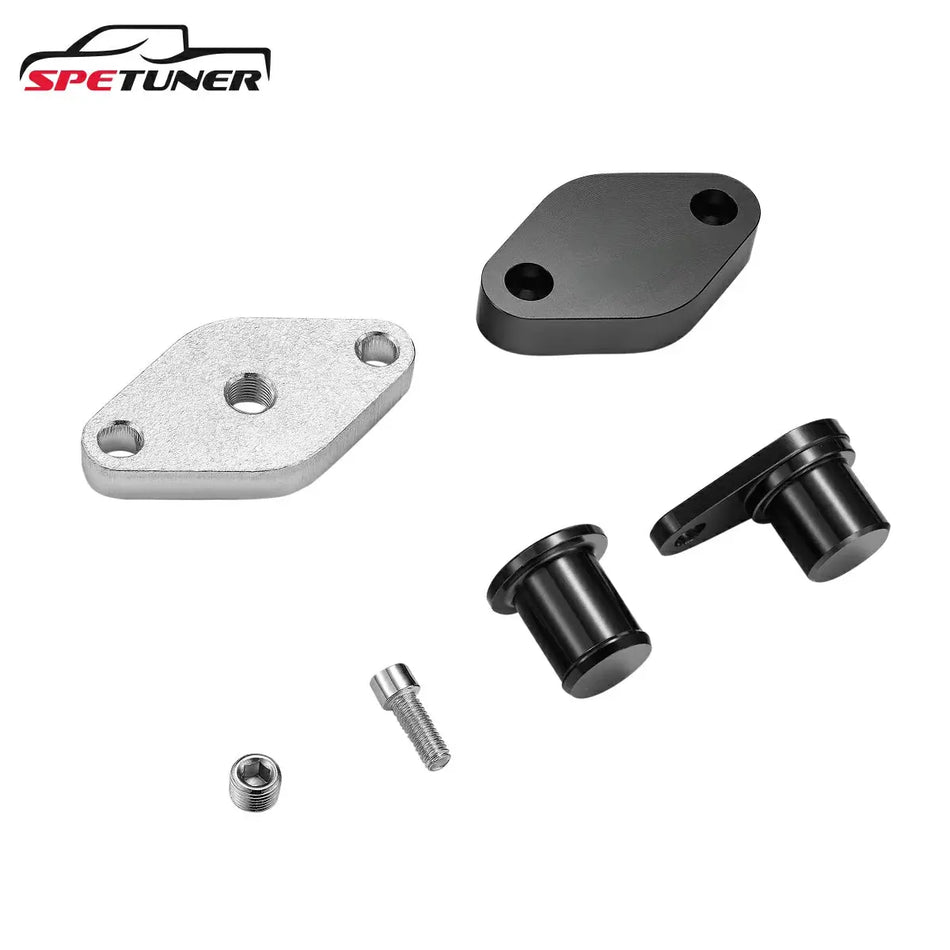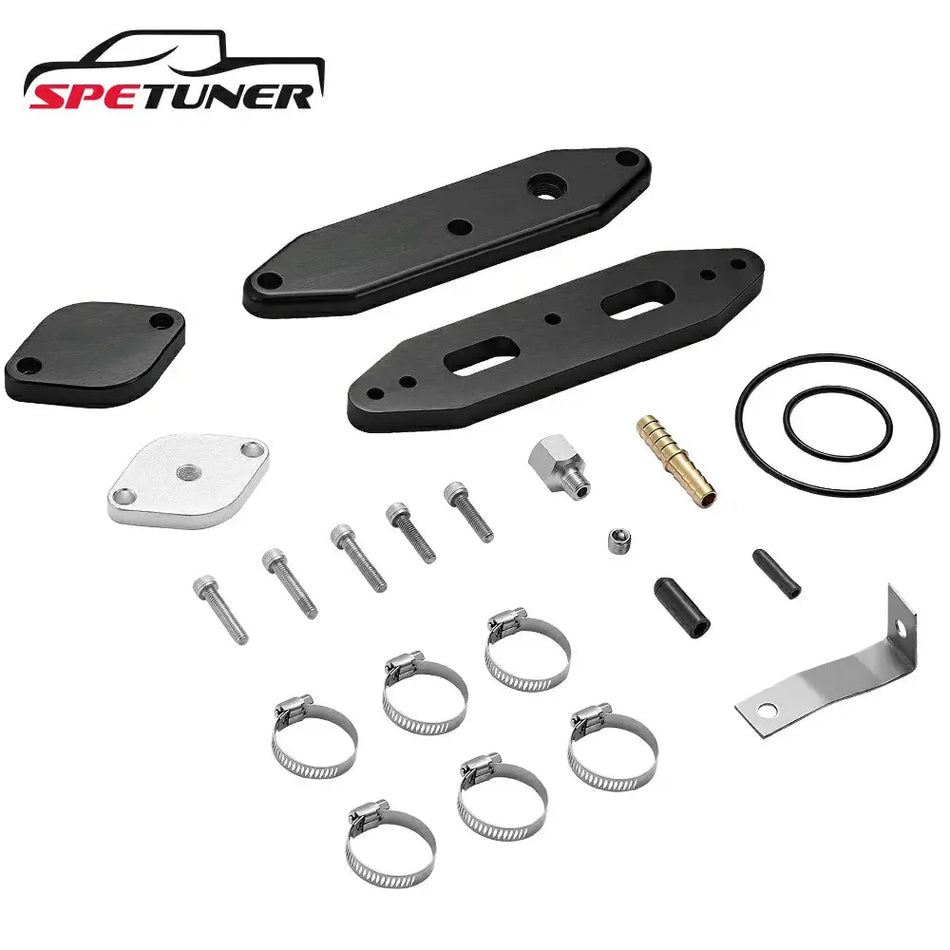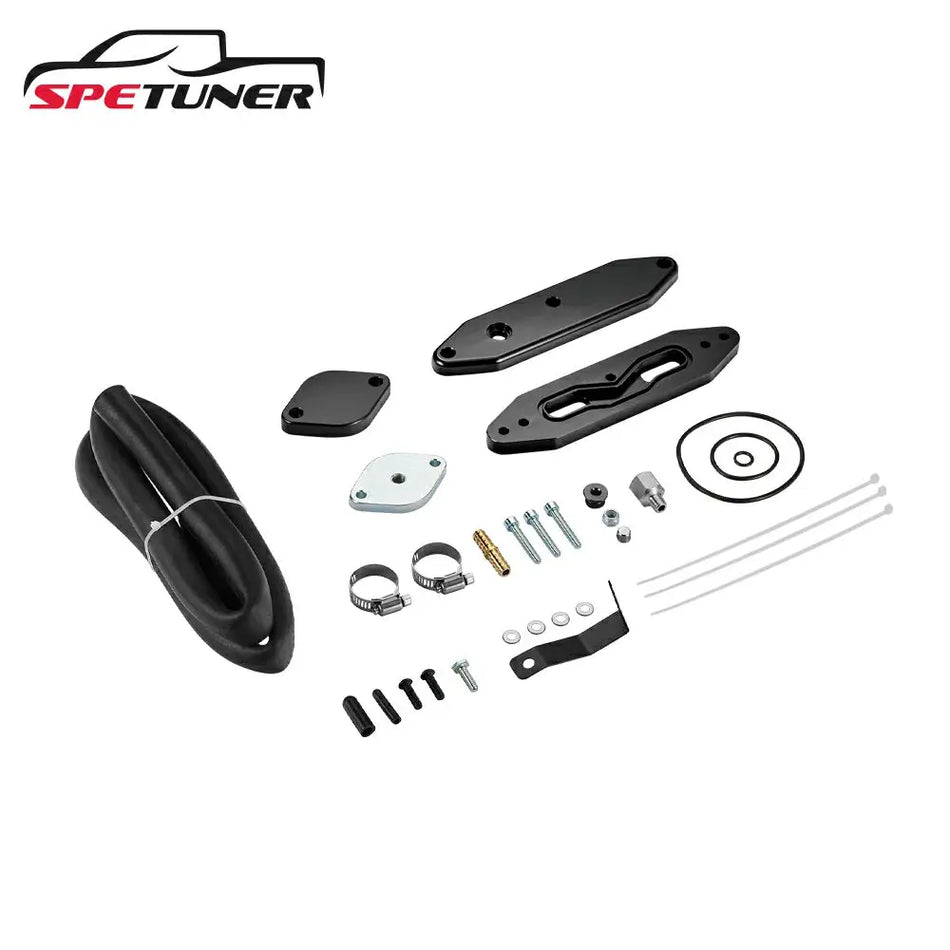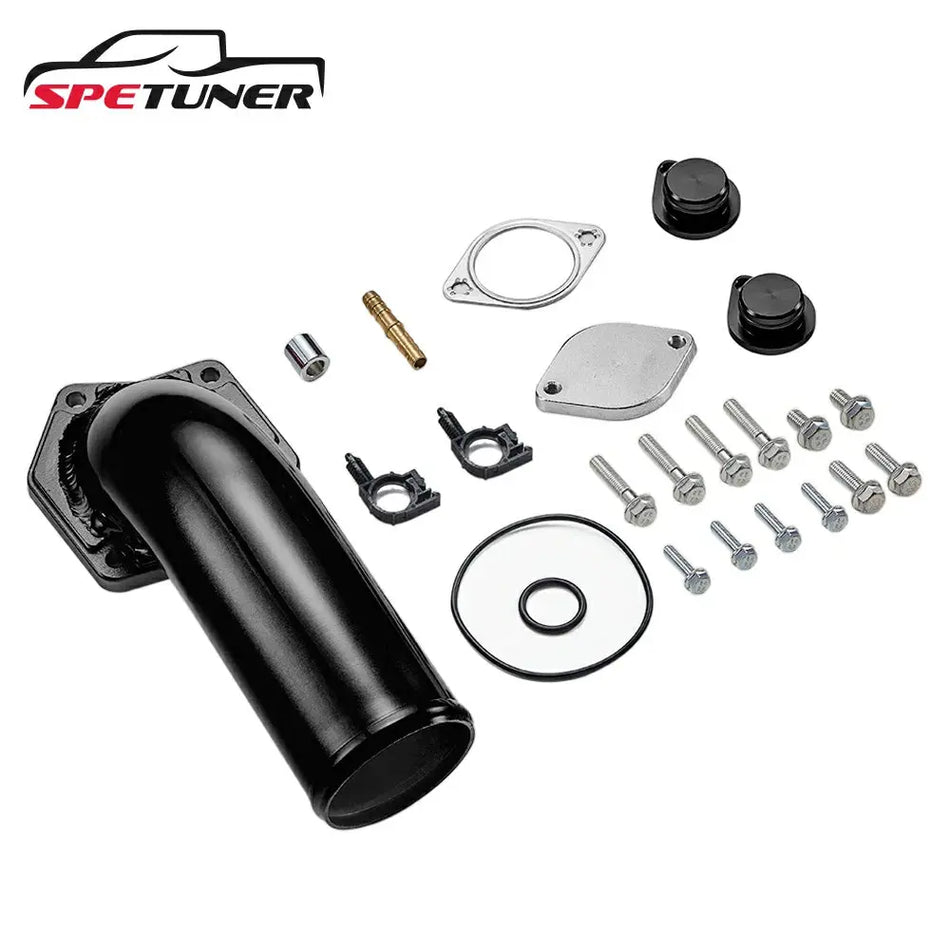Introduction
The 6.7L Powerstroke engine is one of Ford’s most popular and powerful diesel engines, known for its unmatched durability and reliability. Whether you're towing heavy loads or cruising on highways, this engine continues to impress owners with its robust performance. However, maintaining it properly is key to ensuring its longevity, and that includes managing oil capacity correctly.
Oil plays a crucial role in the engine's efficiency and lifespan, which is why knowing how much oil your 6.7 Powerstroke needs is vital. In this guide, we'll break down the oil capacity specifics, as well as best practices to keep your engine running smoothly for hundreds of thousands of miles.
1. 6.7 Powerstroke Oil Capacity Overview
Understanding the oil capacity for your 6.7 Powerstroke is essential to keeping the engine healthy. This section provides a general idea of how much oil your engine needs, and why it’s so important to get it right.
6.7 Powerstroke Standard Oil Capacity
The oil capacity of a 6.7 Powerstroke is typically 13 to 15 quarts, depending on the specific year and model. The oil level is crucial because both low and high oil levels can cause significant engine problems.
l Post-2022 Ford F-Series trucks: If your truck is an F-250 to F-600 produced after 2022, your 6.7 Powerstroke engine can hold up to 15 quarts of oil, including the oil filter.
l 2011-2022 models: For these trucks, the oil capacity is generally 13 quarts with the filter in place.
Ensuring that your engine has the right amount of oil isn’t just about maintaining engine health; it’s about maximizing performance and preventing potential damage.
Oil Capacity's Role in Engine Performance
Maintaining the correct oil capacity is not just about keeping the engine well-lubricated, but also about making sure it functions at its best. Insufficient oil can lead to friction, overheating, and eventually severe engine damage. On the other hand, overfilling the oil can cause foaming, which reduces its lubricating ability and leads to leaks through seals and gaskets.
It’s clear: maintaining the right oil level helps avoid costly repairs and keeps your 6.7 Powerstroke running at its peak.

2. Oil Capacity for Different 6.7 Powerstroke Models
The oil capacity for the 6.7 Powerstroke engine can vary slightly depending on the model year. In this section, we’ll break down the oil capacity for different years of the F-Series trucks, from the 2011 to 2022 models and beyond.
2011 6.7 Powerstroke Oil Capacity
For the 2011 6.7 Powerstroke, the oil capacity is approximately 13 quarts, including the oil filter. This was the year Ford introduced the 6.7L Powerstroke diesel engine, replacing the earlier 6.4L engine. The engine in these trucks was designed to provide more power and efficiency, and properly maintaining the oil level is critical to its long-term performance.
Recommendation: Always use a high-quality oil that meets Ford’s specifications (WSS-M2C171-F1). Regular oil changes are vital for keeping the 2011 model in good working condition.
2012 6.7 Powerstroke Oil Capacity
The 2012 6.7 Powerstroke shares the same oil capacity as the 2011 model, which is 13 quarts, including the oil filter. Although this year didn’t bring significant changes to the oil capacity, it’s important to note that Ford made continuous improvements to the engine, focusing on performance and emissions.
Important Note: Regular maintenance checks are necessary to ensure the engine runs smoothly, as wear and tear from regular use can affect oil levels and performance.
2015 6.7 Powerstroke Oil Capacity
The 2015 6.7 Powerstroke also holds 13 quarts of oil with the filter included. By 2015, Ford had made improvements to the engine's power output and fuel efficiency, which contributed to the 6.7L Powerstroke becoming one of the best diesel engines in the market.
Why It Matters: Maintaining proper oil levels helps optimize fuel efficiency and engine reliability. For trucks used in heavy-duty applications, such as towing, regular checks and oil changes are essential to prevent issues.
2017 6.7 Powerstroke Oil Capacity
By 2017, the oil capacity remained at 13 quarts for the F-250 through F-600 models, including the filter. However, Ford introduced a more refined version of the Powerstroke engine that focused on improving performance and reducing emissions, particularly with the introduction of the new turbocharger system and advanced fuel injection.
Key Tip: Although the oil capacity stayed the same, the engine’s higher power output demands more from the oil, making it essential to use the correct oil and change it at the recommended intervals.
2019 6.7 Powerstroke Oil Capacity
The 2019 6.7 Powerstroke continues with the 13 quarts oil capacity, but it brings some significant updates in terms of power output and efficiency. Ford’s improvements to the fuel system and turbocharging capabilities enhanced the overall engine performance.
Performance Note: Keeping the oil at the correct level is crucial as the engine’s more efficient design means that oil performs under more stress, especially during towing or heavy use.
2022 6.7 Powerstroke Oil Capacity
In 2022, the oil capacity for the Powerstroke engine increased to 15 quarts with the oil filter, thanks to improvements made in the engine’s cooling and performance systems. This change provides better oil flow and improved lubrication, particularly important for maintaining performance under heavier loads and higher temperatures.
Why This Matters: An increase in oil capacity helps improve the engine’s ability to handle increased power and heat. It also provides better protection against wear and tear in heavy-duty operations.

3. How to Choose the Right Motor Oil for Your 6.7 Powerstroke
Choosing the right motor oil is one of the most important steps in ensuring that your 6.7 Powerstroke engine stays in top condition. This section will guide you through the different oil types and what to look for based on your truck’s model and the weather conditions.
Choosing Oil Based on Weather Conditions
l Cold Weather Oil Selection: If you live in a colder climate, it’s important to choose an oil that will perform well in low temperatures. Oils like 5W-40 Full Synthetic Diesel Motor Oil are a great option because they provide better cold-start performance. This oil flows more easily at low temperatures, which helps the engine start up smoothly and reduces wear during the initial startup.
l Hot Weather Oil Selection: On the flip side, for hot climates, oils like 15W-40 Super Duty Diesel Motor Oil are ideal. This oil offers thicker protection in high temperatures, ensuring that your engine parts remain well-lubricated and protected from heat-related damage.
l Multi-viscosity Oils: If your area experiences fluctuating temperatures, multi-viscosity oils like 10W-30 are a solid choice. These oils perform well in both hot and cold conditions, making them a versatile option for varying climates.
Best Motor Oils for 6.7 Powerstroke
When it comes to motor oils, you want to make sure that the oil meets Ford’s WSS-M2C171-F1 specification for the 6.7 Powerstroke. Here are some recommended oils:
l Motorcraft 15W-40 Super Duty Diesel Motor Oil: This is a popular choice for 6.7 Powerstroke owners. It’s designed specifically for diesel engines, providing excellent protection against wear and corrosion. The 15W-40 oil is especially effective in moderate to hot climates.
l Motorcraft 10W-30 Super Duty Diesel Motor Oil: This oil performs better in colder conditions and provides excellent protection during cold starts. It’s recommended for trucks that are regularly used in areas with colder weather.
l 5W-40 Full Synthetic Diesel Motor Oil: If you live in areas where temperatures can drop significantly, synthetic oils like the 5W-40 option are ideal. Synthetic oils have a better viscosity index, which means they perform better across a wide range of temperatures, making them great for winter conditions.
l 0W-40 Full Synthetic Diesel Motor Oil: For extreme cold weather performance, the 0W-40 full synthetic oil is the best option. This oil is designed for quick starts in freezing temperatures and maintains excellent lubrication, even in the harshest cold.
Importance of Using the Right Oil for Your 6.7 Powerstroke
It’s essential to use the oil recommended by Ford because using the wrong oil can lead to several issues:
l Increased Emissions: Using the wrong oil can lead to higher emissions, which can affect your truck’s performance and contribute to environmental pollution.
l Reduced Fuel Efficiency: Improper oil can cause the engine to work harder, resulting in decreased fuel efficiency.
l Void Warranty: If you use an oil that doesn’t meet Ford’s specifications, it can void your warranty, leaving you with costly repair bills in the long run.
Choosing the right oil for your 6.7 Powerstroke ensures that the engine stays well-lubricated, runs efficiently, and lasts longer, saving you money on repairs down the road.
4. 6.7 Powerstroke Oil Change Intervals and Maintenance Tips
Maintaining a regular oil change schedule is essential to keep your 6.7 Powerstroke running efficiently. This section will explain the recommended oil change intervals for different model years and provide some tips for keeping your engine in peak condition.
Oil Change Interval for 2011-2022 Models
For 2011 to 2022 6.7 Powerstroke models, it’s generally recommended to change the oil every 10,000 miles. Regular oil changes ensure that your engine runs smoothly, with fresh oil keeping all moving parts lubricated and working properly.
Why It Matters: Over time, engine oil breaks down due to heat and contaminants, which makes it less effective at protecting engine components. Changing the oil regularly helps to maintain engine performance and prevent unnecessary wear.
Oil Change Interval for 2023 and Later Models
For 2023 and newer models, Ford extended the oil change interval to 15,000 miles. This is because the newer models come with upgraded oil filtration and oil cooling systems, which help the oil last longer.
Factors to Consider: While the oil change interval is longer, the type of driving you do may still affect how often you need to change your oil. For example, frequent towing or driving in harsh conditions may require more frequent oil changes.
Factors That Affect Oil Change Frequency
Several factors can influence how often you need to change the oil, even beyond the manufacturer’s recommended intervals:
Heavy Towing and Loads: If you frequently tow trailers or carry heavy loads, the engine works harder, generating more heat and placing more stress on the oil. This can lead to faster oil breakdown and may require more frequent oil changes.
Climate Conditions: Extreme temperatures, whether very hot or cold, can affect the oil’s viscosity and how well it performs. If you live in an area with extreme weather, it may be a good idea to change the oil more frequently to maintain engine protection.
Driving Habits: Short trips and stop-and-go driving can cause the oil to degrade more quickly because the engine doesn’t reach optimal operating temperature for extended periods. If you mostly drive in city traffic, you may need to change the oil sooner than the recommended interval.
Other Maintenance Tips for 6.7 Powerstroke
Regular oil changes are just one aspect of maintaining your 6.7 Powerstroke. Here are some additional tips to keep your engine running at its best:
Check Oil Level Regularly: Always check your oil level between oil changes. Low oil levels can lead to engine damage, so keeping an eye on the dipstick can help you catch issues early.
Use High-Quality Oil and Filters: Always use oil and filters that meet Ford’s specifications for your 6.7 Powerstroke. Cheap, off-brand oil can affect engine performance and shorten the engine’s lifespan.
Monitor Engine Performance: If you notice any unusual noises or performance issues, it could be related to the oil or engine health. Always address any concerns as soon as possible to avoid bigger problems later.

5. Overfilling or Underfilling Oil: Potential Risks and Solutions
Maintaining the correct oil level is critical to ensuring your 6.7 Powerstroke operates smoothly. In this section, we'll explore the risks associated with overfilling and underfilling the oil, and what you can do to avoid these issues.
The Risks of Overfilling Oil
While it might seem like more oil would provide extra protection for your engine, overfilling can actually cause several problems:
Foaming Oil: When there’s too much oil in the engine, the crankshaft can stir the oil, causing it to foam. This reduces the oil’s ability to properly lubricate the engine parts, which can lead to increased wear and overheating.
Oil Leaks: Overfilled oil can put excessive pressure on the engine’s seals and gaskets, which may result in leaks. This not only wastes oil but can also cause damage to the engine and surrounding components.
Decreased Engine Efficiency: Excess oil can also cause resistance in the engine, reducing fuel efficiency and overall performance. This might lead to poor acceleration and engine sluggishness.
To avoid these risks, always ensure that the oil level is checked regularly and that the engine oil is not overfilled beyond the recommended capacity.
The Dangers of Underfilling Oil
On the flip side, underfilling the oil is just as damaging, if not more so. Insufficient oil can lead to a variety of issues:
l Increased Friction: With too little oil in the engine, the moving parts will not be properly lubricated. This leads to increased friction, which can cause parts to wear out quickly and result in overheating.
l Engine Seizure: In severe cases, if the oil level drops too low and the engine isn’t properly lubricated, it can seize up. This can lead to catastrophic engine failure, leaving you with a hefty repair bill.
l Poor Performance: A low oil level can result in decreased engine performance, affecting acceleration, power output, and overall smoothness of driving.
How to Maintain the Right Oil Level
To avoid both overfilling and underfilling, here are a few steps to follow:
Use a Dipstick: Always check the oil level using the dipstick. Follow the manufacturer’s guidelines for how much oil is needed and ensure that it’s at the optimal level.
Don’t Overestimate the Need for More Oil: It’s easy to assume that adding more oil will help, but only add oil when the dipstick shows that it’s low. Remember, too much oil is just as harmful as too little.
Regular Oil Checks: Perform regular oil checks, especially if your 6.7 Powerstroke is frequently used in towing or heavy-duty conditions, as this can cause faster oil consumption.
6. The Role of the Oil Monitoring System in Newer 6.7 Powerstroke Models
Starting from 2023 models, Ford has equipped many of its F-Series trucks with an oil monitoring system that provides real-time data on oil health and maintenance needs. This system is a valuable tool for ensuring your engine oil is always in optimal condition. Let’s explore how this system works and how it can help you maintain your 6.7 Powerstroke.
How the Oil Monitoring System Works
The oil monitoring system is an advanced feature in 2023 and newer Ford F-Series trucks. It uses sensors and algorithms to evaluate the condition of the engine oil, taking into account factors like:
Driving Conditions: The system monitors how hard the engine is working, especially in heavy-duty conditions like towing or driving in extreme temperatures.
Oil Quality: It evaluates the oil’s viscosity and overall condition to determine if it’s still performing at its best.
Engine Health: The system can also detect potential issues like overheating or excess wear on engine components, which may affect the oil’s effectiveness.
Based on these factors, the system will alert the driver when it’s time for an oil change, even if the manufacturer’s recommended interval hasn’t been reached.
Benefits of the Oil Monitoring System
The oil monitoring system offers several benefits for truck owners, especially those with newer 6.7 Powerstroke engines:
Accurate Oil Change Alerts: The system provides more accurate oil change notifications than simply following a set mileage interval. It takes into account the actual usage and conditions of your truck, ensuring that you change the oil only when necessary.
Improved Engine Longevity: By ensuring that the oil is always at its best, the monitoring system helps to prevent engine wear and reduce the chances of engine failure. This means fewer repairs and a longer lifespan for your engine.
Convenience and Peace of Mind: The system eliminates the guesswork involved in oil maintenance. It offers peace of mind, knowing that your truck is keeping track of its oil health and will notify you when attention is needed.
How to Use the Oil Monitoring System Effectively
To get the most out of the oil monitoring system, here are a few tips:
l Regularly Check the Dashboard: Keep an eye on the dashboard alerts to ensure that the oil monitoring system is functioning correctly. If an alert shows up, take action promptly and perform an oil change if necessary.
l Understand the System's Alerts: The system may provide different types of notifications, such as "oil change required" or "oil quality low." Familiarize yourself with these alerts to know when immediate action is needed.
l Don’t Rely Solely on the System: While the oil monitoring system is a helpful tool, it’s always a good idea to perform regular manual checks, especially if you’re using your truck in harsh conditions. This ensures that you catch any potential issues early.
7. Additional Tips for Maintaining Your 6.7 Powerstroke Engine
Maintaining your 6.7 Powerstroke isn’t just about oil changes. Proper care and attention to other key engine components can significantly extend the lifespan of your truck and ensure it runs efficiently. In this section, we’ll cover other important aspects of maintaining your 6.7 Powerstroke engine.
Upgrading the Engine Oil Cooler
One of the most important upgrades you can make to your 6.7 Powerstroke is installing a BulletProof Oil Cooler. This upgrade is particularly beneficial for trucks that regularly tow heavy loads or operate in extreme heat conditions.
Why Upgrade? The engine oil cooler helps regulate the temperature of the oil, preventing it from overheating, which can lead to thinning and loss of lubrication. This is crucial for maintaining optimal engine performance and avoiding premature wear.
How It Helps: A high-capacity oil cooler, like the BulletProof version, can help the engine maintain its optimal operating temperature even during heavy-duty use. This ensures that the oil remains effective at lubricating the engine components, protecting them from wear and damage.
Compatibility: While many 6.7 Powerstroke trucks can benefit from an upgraded cooler, make sure you choose one that's compatible with your specific truck model year, such as the 2011–2019 F-250 to F-600 models.
Fuel Quality and Its Impact on Engine Health
The fuel you use in your 6.7 Powerstroke plays a significant role in maintaining engine health, especially when it comes to oil life. Using high-quality diesel fuel reduces the risk of soot buildup and protects key engine components like the EGR system.
Why Quality Fuel Matters: Low-quality diesel fuel can introduce contaminants into the engine, leading to soot buildup, poor combustion, and potential damage to the fuel system. This, in turn, affects the engine's performance and increases the strain on the oil.
Additives: Some truck owners choose to use fuel additives to improve fuel lubricity and keep the engine components clean. These additives can help reduce soot buildup and improve the efficiency of the oil in your engine.
Air Intake and Filtration System Maintenance
The air intake system and air filters are crucial for engine efficiency. Proper maintenance of these components can extend the life of your engine oil and ensure optimal performance.
Air Filter Care: Regularly inspect and replace the air filter to ensure that clean, filtered air is entering the engine. A clogged or dirty air filter can reduce the engine’s efficiency and increase fuel consumption.
Importance of Efficient Air Intake: An efficient air intake system ensures that the engine doesn’t have to work as hard to pull in air, which can help regulate engine temperature and improve performance. A clean, well-maintained air intake system directly impacts how efficiently your engine runs and how long your oil lasts.
Air Intake Upgrades: If you're in a dusty or high-debris environment, consider upgrading to a high-performance air intake system that provides better filtration and airflow.
Monitoring and Regular Checks
Even with all the modern technology in place, keeping an eye on your truck’s performance is still key. Regular maintenance checks and monitoring system alerts can help catch problems early before they become costly repairs.
Regular Oil Level Checks: Even if you have an oil monitoring system, it's still a good idea to manually check your oil level at least once a month, particularly if you use your truck for heavy-duty tasks. This ensures you're always aware of your oil level and can address issues before they cause damage.
Engine Performance Monitoring: Pay attention to any unusual sounds, vibrations, or performance drops. If you notice anything odd, it might be time for an inspection or to address potential issues related to the oil or engine components.
Conclusion: Keeping Your 6.7 Powerstroke in Peak Condition
Proper oil maintenance is just one part of keeping your 6.7 Powerstroke running smoothly for the long haul. From selecting the right oil and maintaining the proper oil level to upgrading key engine components, every aspect of care contributes to your truck’s performance, reliability, and longevity.
Recap of Key Oil Maintenance Tips
l Know Your Oil Capacity: Always make sure your 6.7 Powerstroke has the right amount of oil for its model year. Whether it's 13 quarts for earlier models or 15 quarts for newer ones, keeping your engine oil at the proper level is critical to maintaining performance.
l Choose the Right Oil Type: Depending on your climate and driving conditions, select the appropriate oil viscosity. From synthetic oils for cold weather to heavier oils for hot climates, choosing the right oil type ensures smooth operation year-round.
l Change Oil on Schedule: Follow the manufacturer’s recommended oil change intervals. For 2011-2022 models, it’s typically every 10,000 miles, while newer models can last up to 15,000 miles. Adjust for heavy-duty use or extreme climates.
l Maintain the Right Oil Level: Check your oil regularly to avoid both overfilling and underfilling. Both can lead to engine problems, including reduced lubrication and engine wear.
Ongoing Engine Care and Performance
While oil maintenance is key, don’t forget about the other aspects of engine health:
Upgrading the Oil Cooler: If you tow heavy loads or operate in hot conditions, an upgraded oil cooler can significantly improve the engine’s longevity by keeping the oil at an optimal temperature.
Monitor Air Intake and Fuel Quality: Clean air filters and high-quality diesel fuel go a long way in maintaining engine efficiency, improving the life of both your oil and engine components.
Use Technology to Your Advantage: If your truck has an oil monitoring system, use it. It’s a great tool for tracking oil health and ensuring you change it when necessary, based on actual usage rather than mileage alone.
Final Thoughts
The 6.7 Powerstroke engine is built to last, but like any high-performance machine, it requires regular maintenance to ensure it continues to perform at its best. By staying on top of oil maintenance and considering other key engine components, you can keep your 6.7 Powerstroke running smoothly for years to come.
Remember, it’s not just about changing the oil—it’s about taking a holistic approach to engine care. Regular checks, using the right oil, and upgrading components when necessary will ensure that your truck continues to deliver the power and performance you expect.
Source:
https://www.eia.gov/todayinenergy/detail.php?id=61243
https://www.dieselhub.com/maintenance/6.7-power-stroke-engine-oil.html









